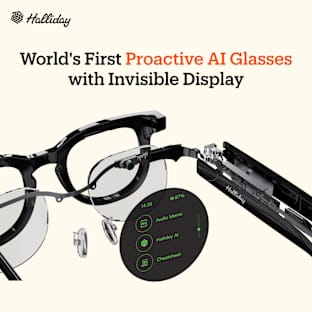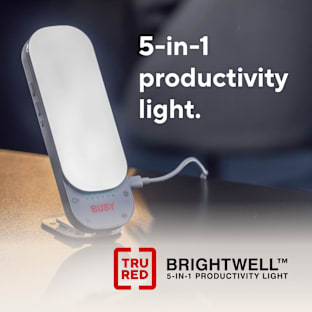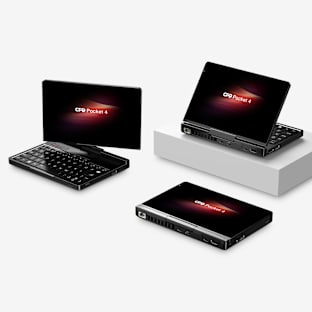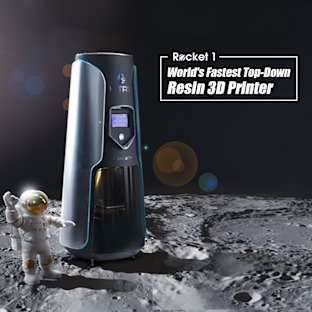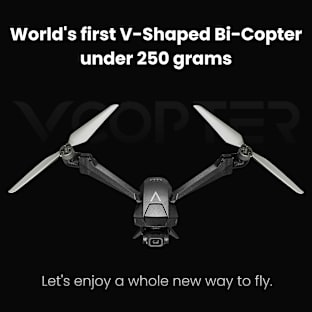Pegasus Therapeutics is combining the latest technology in non-surgical aneurysm treatment and coronary artery stenting to design a bioresorbable flow diverter -- a medical device that gives the body a chance to heal and then dissolves away completely after the therapeutic timeframe. Our vision is for children with coronary artery aneurysms to live longer, healthier, more productive lives.
In 2012, our CEO's daughter Allison was diagnosed with Kawasaki Disease, the leading cause of acquired heart disease in children in the United States and many other nations around the world. Once her condition stabilized, Allison was left with two giant aneurysms in her coronary arteries -- a condition that most often leads to open heart surgery at a young age. Unsatisfied with the current treatment options, Allison's father set out to design a non-surgical device that meets the unique demands of pediatric use -- something that could help Allison's arteries heal without getting in the way of natural vessel growth.
![]()
Our Solution:
Taking cues from cutting edge technology in coronary artery stenting (such as
Abbott's ABSORB® Bioresorbable Vascular Scaffold) and non-surgical aneurysm treatment (such as
Covidien's Pipeline® Embolization Device), Pegasus Therapeutics is designing a Bioresorbable Flow Diverter to give young patients with coronary artery aneurysms a more suitable treatment option that avoids open heart surgery, allowing the body's natural healing response to take place. By designing a device that resorbs (dissolves) back into the body, our goal is to leave the artery healed without restricting future vessel growth or limiting options for other treatment that may be needed later in life.
![]()
Who will this help?
This device was inspired by the 20,000 kids like Allison in the US, and many more world-wide, who are living with coronary aneurysms that may eventually need treatment. In addition, our technology will help pave the way to improved therapies for the 8 million people in the United States with arterial aneurysms in the cerebral, coronary,
and peripheral vasculature who could benefit from a similar procedure.
How it Works:
![]()
After being delivered to the coronary artery through a catheter (similar to how a stent is deployed), our Bioresorbable Flow Diverter limits blood flow to the aneurysm while keeping the main artery open. This gives the body a chance to heal the aneurysm naturally - first through a gradual clotting process, and then by creating a new vessel lining that seals it off with scar tissue. As the flow diverter gradually resorbs, the aneurysm has further opportunity to heal, allowing the body to take over its natural function of pumping blood through the remodeled artery.
For more in-depth information, please see our technical
information series (click on topic for video link):
![]()
![]()
We are at a critical stage in development -- prototyping. We have done a lot of research, engaged clinical experts to validate our concept, filed provisional patents based on the design, and worked with an ISO certified development partner to build prototypes. It is now time to put our device to the test under simulated use conditions (in a bench-top flow model) so that we can learn, tweak, and refine the design until it works as well as or better than its metal counterparts!
Funding Goals
Our goal of raising $50,000 will allow us to build a benchtop flow model of the arterial system and the heart with simulated aneurysms in order to test and refine our current prototypes. This benchtop flow model consists of the following:
- $32,000: pulse-duplicating pump from BDC Laboratories
- $9,000: artery system model, like those made by Farlow Scientific and Malchow Glass
- $6,000: anatomical models of the coronary arteries with aneurysms
- $3,000: flow testing sensors, fluids, and materials
If we meet our stretch goal of $300,000,
we can get well into our Design and Development phase, which would allow us to:
- Finalize the design of our prototypes
- Generate the detailed test data as well as engineering
drawings and specifications needed to fully define the device
- Create a formal quality management and documentation
system in accordance with ISO 13485 that will be recognized by regulatory
agencies like the FDA and PDMA
- Develop assembly processes that will be needed to manufacture the
devices used for Verification & Validation
- Engage a contract manufacturer that we can partner with to build product for Verification & Validation, and eventually Clinical Trials
Translated Videos
Thanks to those who have volunteered to translate our pitch video so that we can spread the word internationally. The following translations are currently available, more will be coming soon.
Please let us know if you have any questions, comments or suggestions!
You can leave questions on our comments page or send us an email at kelly@pegasustherapeutics
Team
Aubry Shackelford, CEO
As a technical engineering consultant in process safety management, Aubry has been recognized as a national expert in the field of overpressure protection. A senior executive, partner at several companies, currently part-owner of two, and founder of an engineering consulting services firm, Aubry brings a deep understanding of how to build and maintain a successful startup. Aubry is a licensed professional engineer in the field of chemical engineering in MA, TX, OK, and Alberta, Canada.
Dave Rezac, VP of Product Development
Throughout his career, David has focused on creating novel interventional medical devices that address unmet needs in the treatment of cardiovascular disease. As an engineering consultant, David has helped bring several first-in-class therapies to life. His most relevant experience includes being part of the core team that developed the delivery system for the IDEV SUPERA® peripheral stent and acting as project leader from concept through clinical evaluation and commercial launch for the Embrella Embolic Deflector®.
FAQs
Why are you crowdfunding a medical device?
After Allison's diagnosis, Dave Rezac (Allison's uncle, a medical device engineer, and our VP of Product Development) started asking around and educating himself on relevant new technologies in hopes of finding something in development that could help Allison and others with her condition. He was told that although this type of technology could have serious potential for kids with aneurysms, large device companies most likely would not develop it because the pediatric market is too small. Not one to be easily deterred, Dave partnered with Allison's father, Aubry Shackelford, who also happens to be a licensed professional engineer with a lot of experience in starting companies, and together they formed Pegasus Therapeutics so that they could bring this important device to market themselves.
Will your device work for all kids with aneurysms?
Not necessarily. Everyone's anatomy is unique, making a "one size fits all" solution hard to come by. That said, stents and other implants have the same challenge and are manufactured in a range of types and sizes so that they work for as many patients as possible. We plan to take a similar approach.
Does your device get rid of the aneurysm completely?
Hopefully! Our goal is to give the body a chance to heal itself, and then get out of the way. Because a device like this doesn't exist yet, it's impossible to know how complete a solution it may provide. Based on the encouraging clinical results of metal flow diverters (see Covidien's Pipeline® Embolization Device) and bioresorbable vascular scaffolds (such as Abbott's ABSORB®), we believe this device could be a game changer for kids with aneurysms. Even if our Bioresorbable Flow Diverter does not completely heal the aneurysm in all patients, it could help doctors extend and improve quality of life by delaying more aggressive treatments (such as surgery or traditional stenting) until the patient is fully grown. By dissolving away within 2-3 years, our device will give physicians more options to meet the needs of each individual child while avoiding traditional long-term complications.
Have you reviewed this technology with any Kawasaki Disease specialists?
We started by validating the concept with clinical pathologists who are very familiar with aneurysms, bioresorbable stents, and flow diverters, then sought additional input from the medical community, including a premier US KD expert, to strengthen the concept. An important piece to keep in mind is that the physician placing stents in the heart is generally different than the one placing metal flow diverters in the brain, who is different still from those doing these types of procedures in pediatrics, or the cardiologist specializing in KD. We recognize that developing this device will require a unique combination of medical disciplines and inputs from various experts, which is why we have consulted and will continue to call on a Scientific Advisory Board throughout the various stages of development. While attending the International Kawasaki Disease Symposium in February 2015, Aubry was able to connect directly with several more KD specialists who were eager to learn about the concept and hear results from some of the planned testing.
Based on your preliminary research, would your bioresorbable flow diverter be best suited to children who are in the earlier stages of their healing and have no early signs of stenosis?
Existing research suggests earlier is better. That said, Abbott's ABSORB and others are setting good clinical precedence for how to deal with stenosis, even in older patients with heavy calcification. Because patients with KD often have this combined issue (aneurysmal disease with stenoses at the necks), we think a dedicated design may be necessary that has separate zones to prop the vessel open at each end (similar to a stent), but resists expanding across the aneurysm where it is helping to define the new lumen for blood flow. This is one of the key reasons we need our flow model -- to do functional testing and figure out ways to optimize it. Definitely on our radar as a key design consideration. We're pulling together some deeper dive videos that touch on some of these points. Be sure to check back for updates. We will send out an announcement when these post to the website.
Will this device be able to help my child who
has…Multiple Aneurysms? Stenosis at the Aneurysm necks? Has already undergone bypass
surgery?
Candidly
and simply put, it is too early to know. Given that these are common
scenarios with the progression of Kawasaki Disease, our engineers are designing
with each of them in mind. That said, these are all very different and
complex clinical situations, and each child’s heart is unique. In the
end, it will be up to each family and their cardiologist to decide the best
course of treatment. Our goal is to add to the toolbox of solutions, and
bring this technology forward, to the benefit of as many children as
possible. To understand what a device like this is capable of, we need to
perform a lot of bench testing in a variety of vascular models, which will
help us refine the design and better understand the capabilities (and limitations)
of this technology. That is why we are asking for help to fund the bench
top flow model as a key next step in our development process. It is
important to keep in mind that even once this device is in use, second and
third generation designs will likely be developed to help treat aneurysms in a
wider range of anatomies and clinical scenarios. This is a process that
does take time, but we believe by starting it now instead of waiting (possibly
years or even decades) for someone else to bring it forward, we are giving it
the best possible odds of helping our children and sparing those who may be
diagnosed in the future from some of the challenges we are forced to face as
families of those affected by KD.
